- After falling, yields bounced back
- Oil may be setting up for a bearish move
- Bitcoin slightly higher
- Netflix (NASDAQ:NFLX) reports Q4 results after today's US close.
- UK retail sales figures are released on Friday.
- On Friday Canada publishes retail sales data.
- The FTSE 100 fell 0.2%
- The STOXX 600 fell 0.2% as of 8:30 a.m. London time
- Futures on the S&P 500 rose 0.2%
- Futures on the NASDAQ 100 rose 0.3%
- Futures on the Dow Jones Industrial Average rose 0.2%
- The MSCI Asia Pacific Index fell 1.3%
- The MSCI Emerging Markets Index fell 0.1%
- The British pound rose 0.1% to $1.3631
- The Bloomberg Dollar Spot Index was little changed
- The euro rose 0.2% to $1.1362
- The Japanese yen was unchanged at 114.33 per dollar
- The offshore yuan was little changed at 6.3468 per dollar
- Britain's 10-year yield was little changed at 1.26%
- The yield on 10-year Treasuries declined two basis points to 1.85%
- Germany's 10-year yield was little changed at -0.01%
- WTI crude dropped 1.71% to $85.47 a barrel
- Brent crude fell 0.66% to $87.86 a barrel
- Spot gold was little changed
Key Events
US futures on the Dow Jones, S&P 500, NASDAQ and Russell 2000 as well as European stocks were marginally higher in trading on Thursday as markets recovered slightly.
Gold fell back, however, after rallying strongly yesterday.
Global Financial Affairs
On Wednesday, President Joseph Biden said he supported Fed Chairman Jerome Powell's plan to start tightening US monetary policy while also acknowledging that his $2 trillion, Build Back Better spending plan for social and environmental initiatives will have to be broken up.
All US contracts were trading in the green, with futures for the NASDAQ 100 outperforming. The Dow Jones and Russell 2000 contracts were the worst performers, a paradigm demonstrating the rollback of the cyclical rotation into value stocks.
Companies listed on the European STOXX 600 were marginally higher with metal prices boosting mining stocks.
Equities in Asia advanced after China continued to diverge from the policies of global monetary tightening when it cut interest rates to kickstart an economy losing steam. Ironically, China's Shanghai Composite was the only major regional benchmark to close in the red. Hong Kong's Hang Seng jumped 3.42% due to the loosening policy there. Japan's Nikkei 225 added 1.11% after data showed the country's December exports surged 17.5% on an annualized basis.
US stocks extended a selloff on Wednesday as investors considered the complex market environment. Corporate earnings are expected to outperform, as they may not yet reflect the impact of the Omicron variant. At the same time, the Fed is on the fast-track to remove emergency market support and raise interest rates which would be negative for equity valuations.
The S&P 500 dropped 0.97%, with both value and growth sectors slipping. The Consumer Discretionary sector lost 1.81%, even after the industry rallied in Europe on Wednesday. Financials dropped 1.68%, followed by Technology's 1.4% slide. Defensive sectors offered the only bright spot with Consumer Staples and Utilities gaining 0.63% and 0.45% respectively.
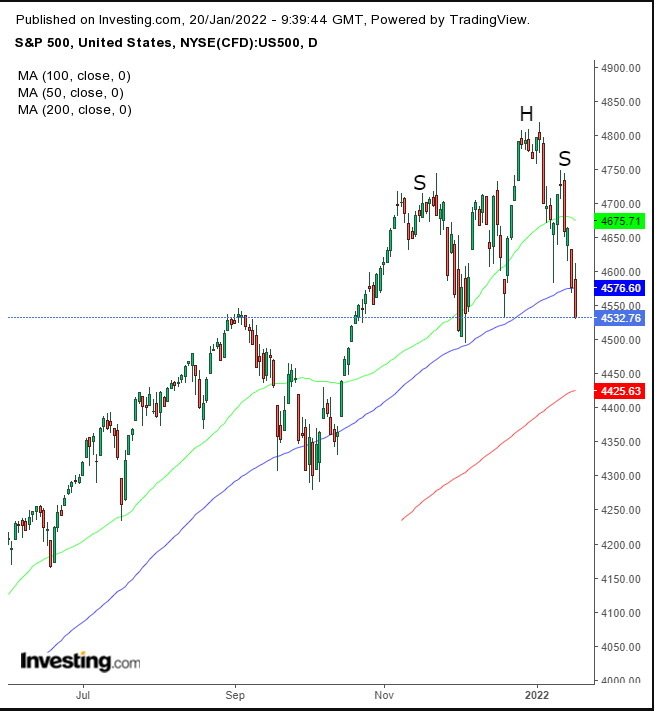
The broad benchmark cut through the 100 DMA for the first time since October. The critical moving average could be a natural neckline for a potential top.
The NASDAQ 100 dropped 1.07%, completing more than a 10% slump since its Nov. 19 record close, putting the tech-heavy gauge into correction territory.
The NASDAQ suffered due to sharp rises in Treasury yields, as technology stocks tend to get hit first by expectations of stretched valuations. Still, we identify an anomaly on this typical market correlation in the form of an even sharper selloff by US domestic firms listed on the Russell 2000.
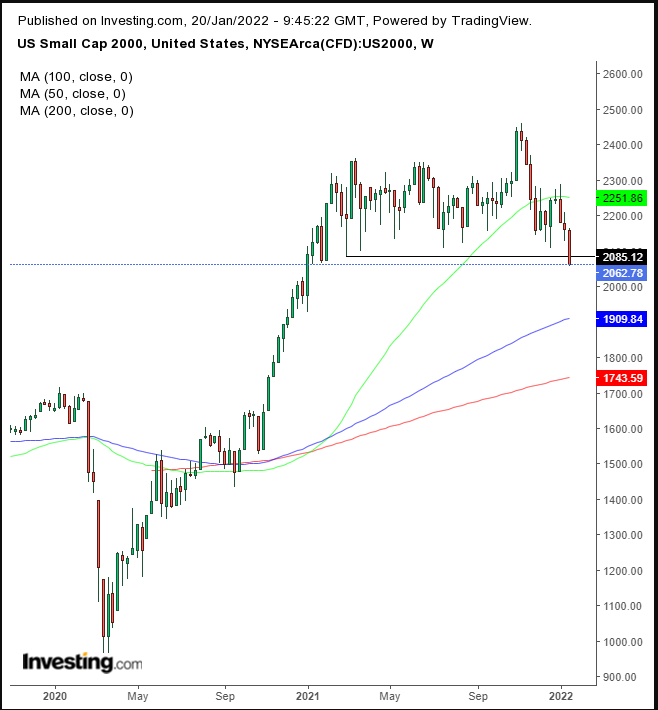
The small-cap index gave up 1.6% of value, potentially completing a top.
Meanwhile, 10-year yields advanced slightly after retreating for two days.
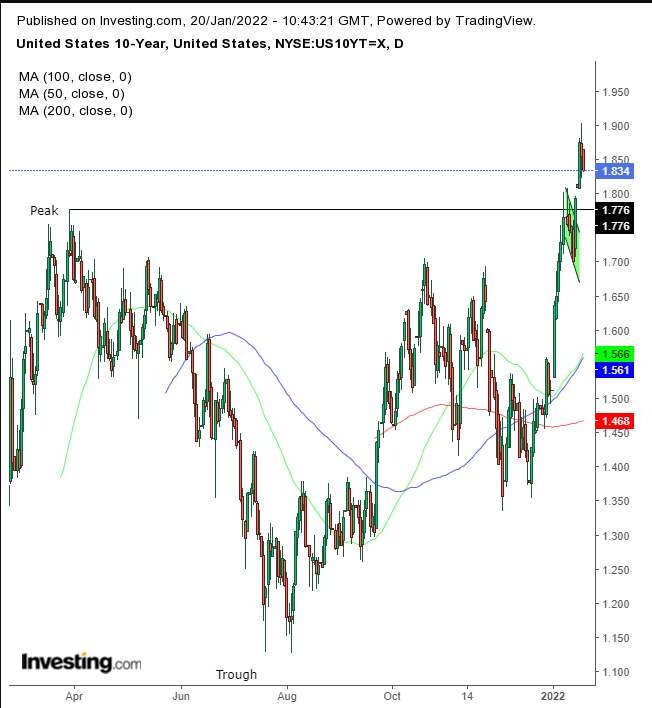
Presumably the fall was part of a return move to a falling flag, a bullish formation, after besting the previous peak.
The dollar was marginally higher after its slide, now sitting on the edge of a technical knife.
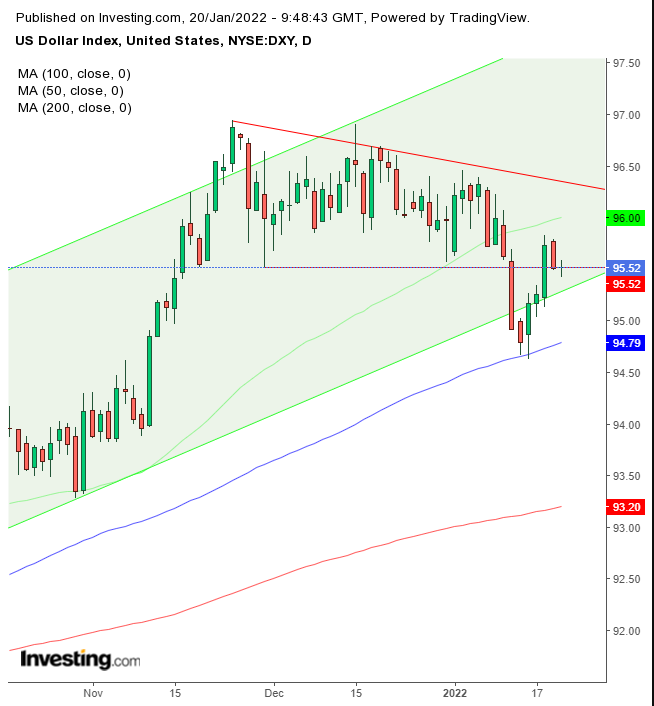
Its fall yesterday ended a three-day advance; it is now sitting right on the bottom of a descending channel.
Gold pared gains after Wednesday's fantastic jump on the USD tumble and Treasury yields, which are safe haven competitors.
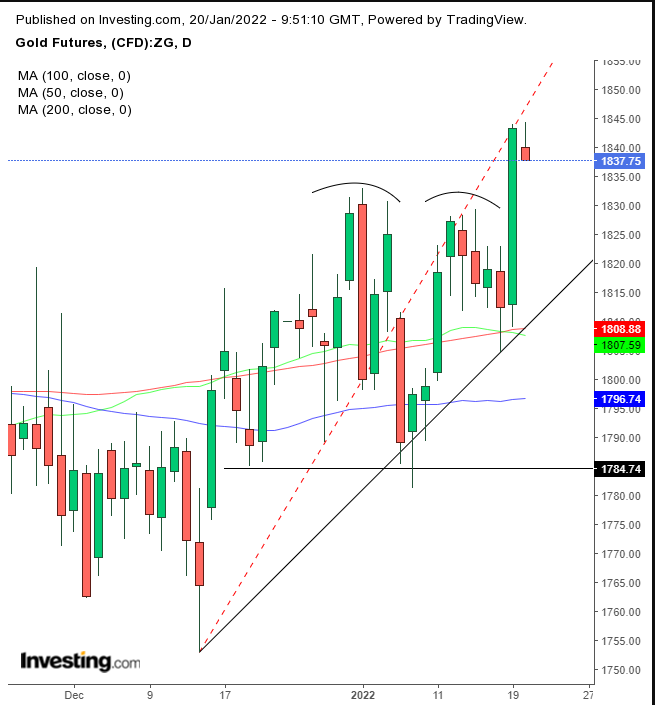
The yellow metal's surge yesterday blew out a potential top and extended the preceding short-term uptrend.
Bitcoin rose within a sideways range.
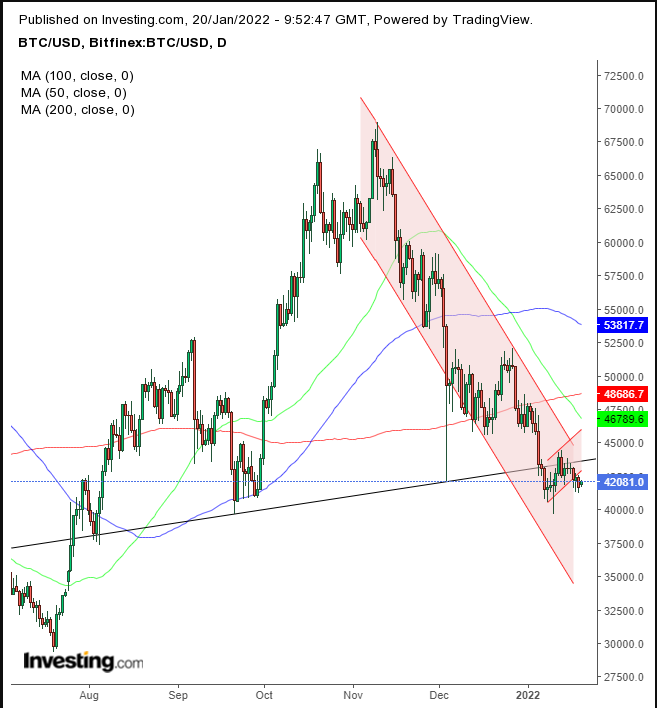
The cryptocurrency completed a bearish flag, confirming a sizeable H&S top.
Oil slipped from a seven-year high as forecasts for strong demand have driven the price higher. Geopolitical tensions in Europe also remain a risk to the price.

WTI opened lower, forming a falling gap, making up for Wednesday's rising gap on the higher open. If the price closes below $84.75, it will have completed a bearish Evening Star—a three-day reversal pattern.
